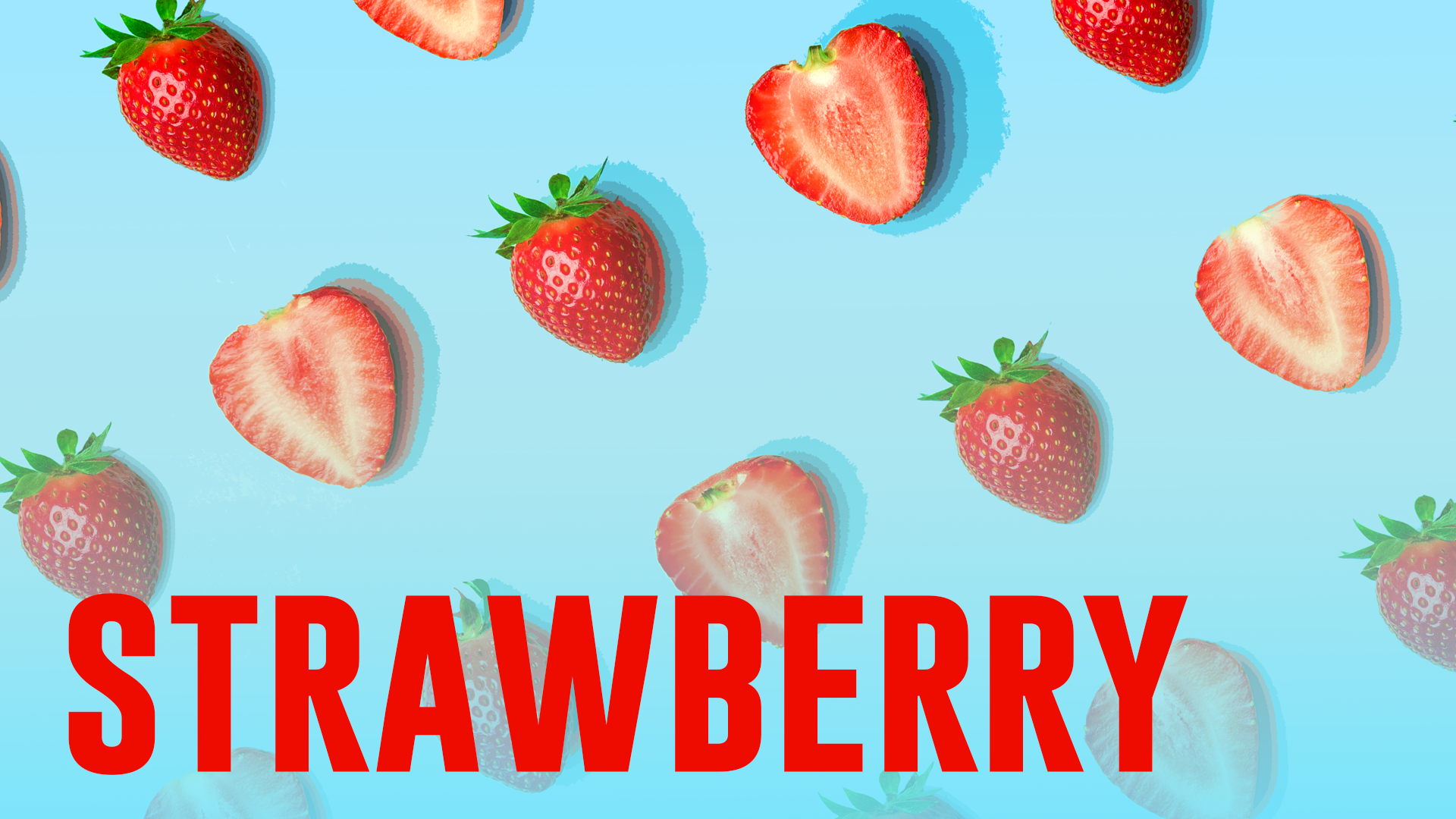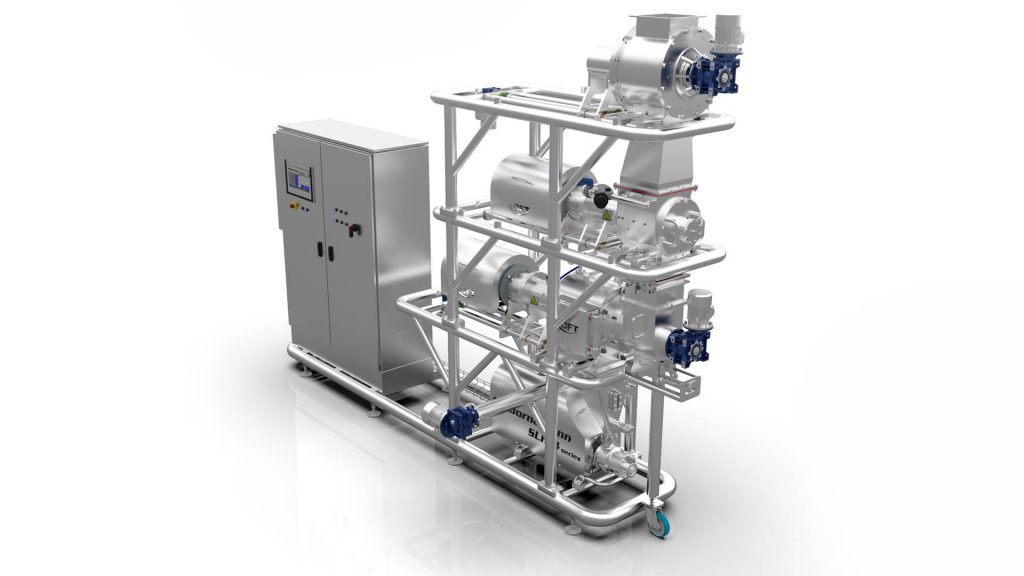
Strawberry processing plants
Strawberry purée is a highly valued ingredient in a wide range of food and beverage products, including smoothies, yogurts, desserts, baked goods, sauces, and baby food. With growing demand for natural, safe, and flavorful ingredients, the food industry is increasingly focused on solutions that ensure consistent quality and extended shelf life.
To produce high-quality purée, the processing method must preserve the fruit’s organoleptic and nutritional properties while ensuring efficiency, hygiene, and sustainability.
In this article, we explore the key stages of the industrial transformation of strawberries into purée, focusing on the most commonly used technologies and best practices for preserving the qualities of this delicate fruit.
The Process
Industrial production of strawberry purée begins with washing and selecting the raw fruit. Depending on the season and local availability, strawberries may arrive fresh or frozen. They are washed to remove soil, leaves, and impurities, then sorted to discard any damaged or unsuitable fruit.
Next is the crushing phase, where strawberries are broken down into a coarse pulp. This pulp undergoes blanching, a thermal treatment designed to deactivate enzymes responsible for oxidation and the degradation of color, flavor, and texture. This step is essential to preserve product quality and extend its shelf life.
The pulp is then sieved to remove solid residues such as seeds, fibers, or bits of skin, resulting in a smooth and homogeneous consistency. If needed, a further refining step may follow to achieve an even finer texture, depending on the final application.
At this point, the purée may go directly to the stabilization phase, or it can undergo an additional concentration phase. Concentration reduces water content, increases the density of the product, and facilitates storage and transport. It also enhances flexibility in subsequent industrial applications.
The purée is then pasteurized or sterilized to ensure microbiological safety and long-term stability.
Finally, the purée is packaged based on logistical and commercial needs, hot-filled, aseptically filled, or frozen.
Throughout the entire process, maintaining a controlled environment and accurately monitoring key parameters such as temperature, timing, and mechanical stress are crucial to preserving the strawberry’s sensory and nutritional qualities and ensuring a high-quality final product.
How to Produce the Best Strawberry Purée
Producing premium strawberry purée requires more than simply following a standard procedure. Careful fruit selection, close monitoring of each stage, and the use of modern, integrated technologies are all essential.
The first step is choosing fully ripe, aromatic strawberries with a deep red color and high sugar content. Underripe, overripe, or damaged fruit will compromise the flavor, texture, and nutritional value of the final product.
Once selected, the fruit must be carefully washed and inspected to remove dirt, debris, and foreign materials. Throughout processing, it is essential to minimize mechanical stress to preserve the fruit’s natural color, cell integrity, and aroma. Gentle handling during crushing, refining, and heat treatment helps prevent oxidation and maintain quality.
Advanced automation and monitoring systems allow producers to maintain consistent results across batches by precisely controlling temperature, timing, and flow parameters. This approach also enables faster changeovers and more efficient resource use.
Hygiene is a critical element for food safety and product stability, especially for purées intended for aseptic filling or long shelf life. Equipment must be designed to facilitate cleaning, prevent contamination, and meet strict sanitary standards. Clean-In-Place (CIP) systems, hygienic design, and controlled environments are essential to achieving these goals.
Finally, sustainability is a growing priority in the food industry. Energy- and water-efficient solutions help reduce environmental impact while maintaining high performance. In summary, producing premium strawberry purée requires an integrated approach that combines careful selection, optimized processing, hygiene, and sustainability to meet the growing expectations of both consumers and the industry.
The Machinery
At the heart of CFT’s strawberry processing plants are several advanced technologies that ensure efficiency, hygiene, and consistent performance. Leading the lineup is the Zenith Chrono System, which combines anaerobic extraction with ultra-rapid enzyme inactivation, thereby avoiding the oxidation and enzymatic browning that can dull color and alter flavor. This state-of-the-art system operates within a sterile, oxygen‑free environment and stops enzyme activity almost instantaneously, ensuring that the product preserves its natural fragrance, taste, and hue without chemical additives.

Once the puree is extracted, it passes through the Olimpic TC pasteurizers/sterilizers, which utilize a patented ogive flange design. These exchangers offer uniform thermal treatment, ensuring microbial safety while preserving texture and sensory characteristics. Their high surface area to volume ratio allows short pasteurization times and rapid cooling, thus reducing thermal stress on the product and preserving quality—especially critical in delicate fruit purées.
Beyond these flagship machines, our production lines include a suite of technologies to optimize each processing stage. This includes automatic sorting systems equipped with optical and mechanical checking to remove off-spec fruit, Mixflow evaporators with aroma recovery units to concentrate puree while preserving natural flavors, and aseptic fillers or blast freezers based on the customer’s preferred final format.
All equipment is connected through a centralized control system with HMI (Human-Machine Interface) for recipe-driven operation, streamlined changeover, and full traceability. CIP (Clean‑In‑Place) systems ensure effective and rapid cleaning between production runs. The modular design supports scalability, including optional automation for feeding, storage tanks, and dosing systems, allowing configuration flexibility based on production volume and desired output format.
In summary, CFT’s strawberry puree plants embody the convergence of precision engineering, smart process control, and high hygiene standards, all combined to deliver consistently exceptional product quality, processing efficiency, and operational sustainability.